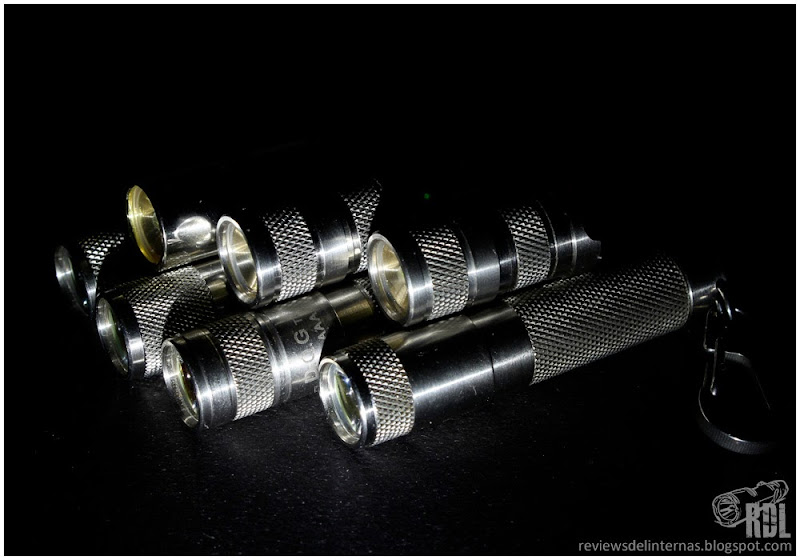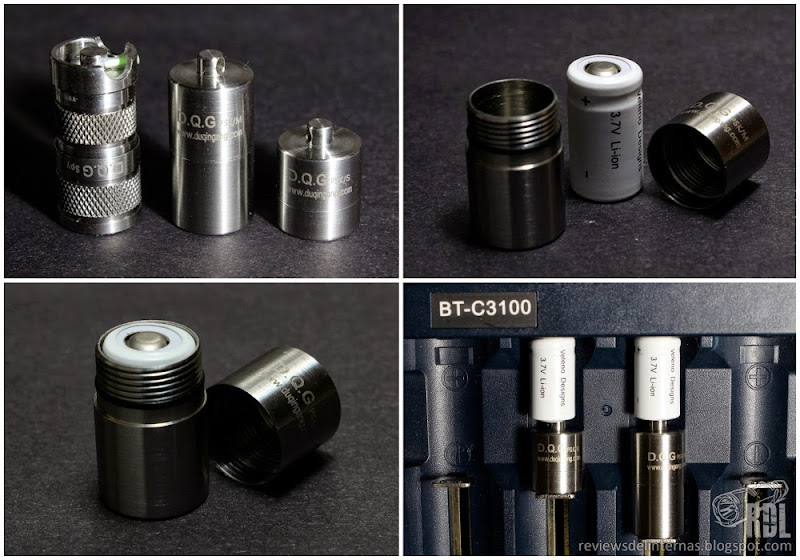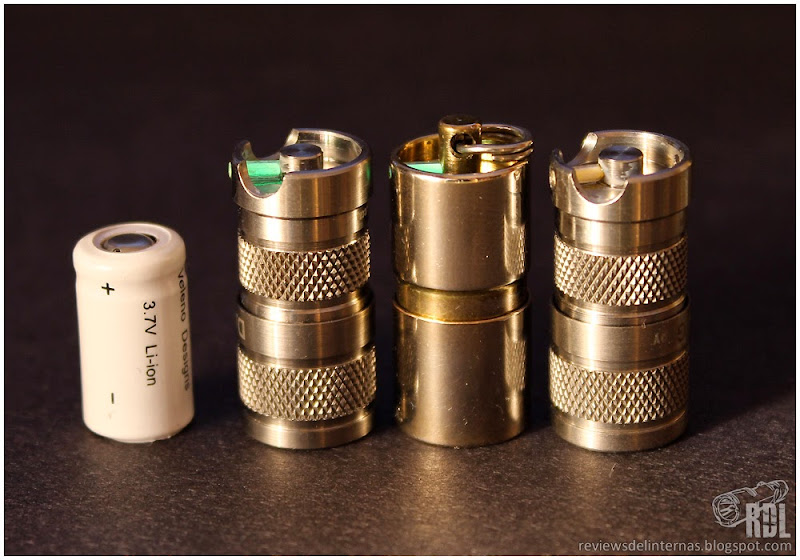
DQG FAIRY
LED: CREE XP-G2 R5 (1A CW / 4C NW)
Battery: 1x 10180
Modes 2 (Low-High) No memory.
Switch: Twisty
Date: April 2014
Links:
Banggood
PRESENTATION:
As I advance in the previous review of DQG SPY, parallel with this project a second interpretation of how a 10180 flashlight could be produced by DQG was devised.
The concept of this DQG FAIRY is quite different from the Spy DQG since dispensed with the hallmarks of family TinyAAA to end in a simpler and flirty flashlight.
Some of the ideas were shuffled in principle machine it in copper and then platted in nickel with golden finish. Finally it was decided to mechanize it in brass (which is still an alloy of copper with zinc) which was originally to be gold plated nickel after machining of parts but for various problems has been left in polished brass.
The unit I am presenting is a pre-production unit (more or less finished prototype), and differs slightly from production batch that just went on sale.
First of all I will share some of the images from the first prototype development, in which you can see the changes that have gone shoves over recent months.

Initially, as I said in the review of DQG SPY, the idea was to machine and sell an extra tube for the (then) upcoming release of DQG TinyAAA Ti II. To show our idea, I made this crappy photoshop image to get an idea of how would be the possible future project.

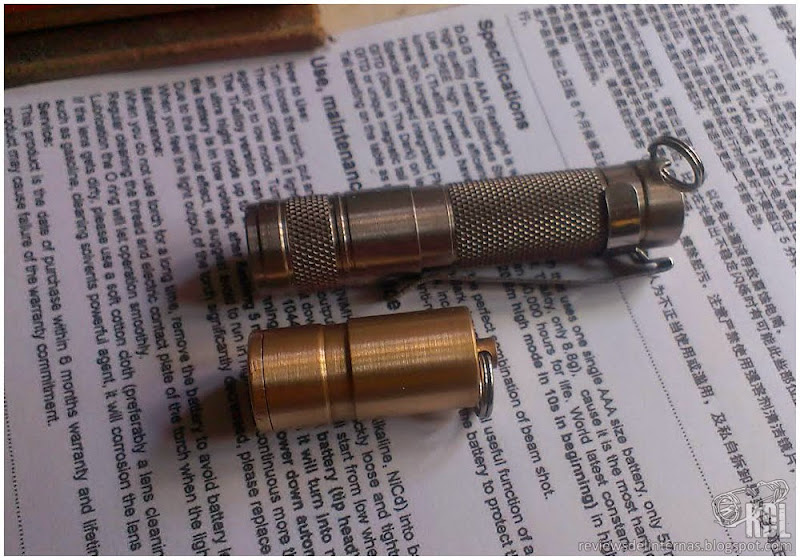
Here you can see the first prototype of SPY / FAIRY. It’s just a sketch to test the driver but as you can see, the original design is pretty close to what has been finally the FAIRY.
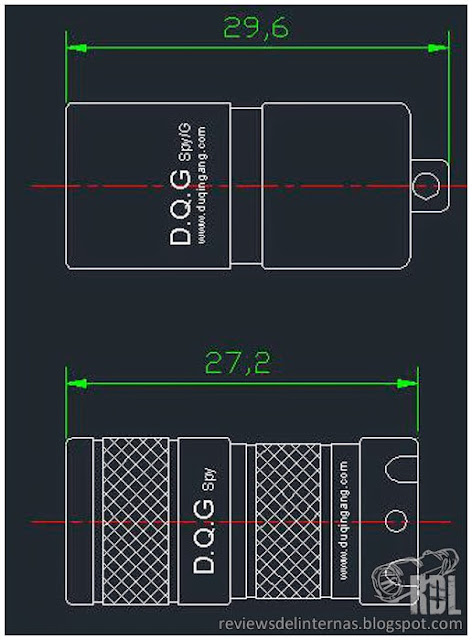
This image shows the diagram of the design of both versions separately. Curious as FAIRY name has been changed at the last moment, since initially the second option would be called DQG SPY/G.
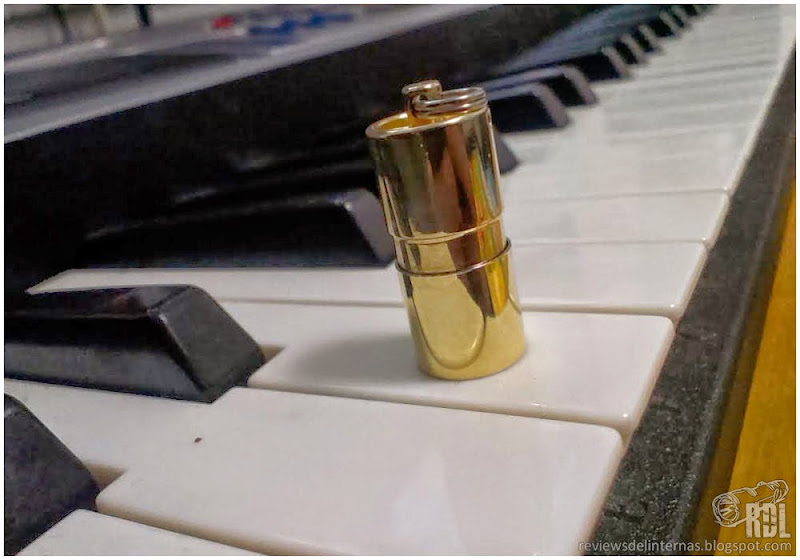
This image is a photo of the second prototype, once platted.
EXTERIOR FINISH:
The FAIRY is very different to the SPY, and has a smooth, polished finish on its surface, without knurling areas on head or tube with a cylindrical appearance only broken in the center by a small recess at the junction between the two pieces.
The lens is identical to that found in the SPY, the XP-G2 without reflector or TIR lens protected behind a glass lens (in this case also quartz), and surrounded by what appears to be part of the pill, also in brass.
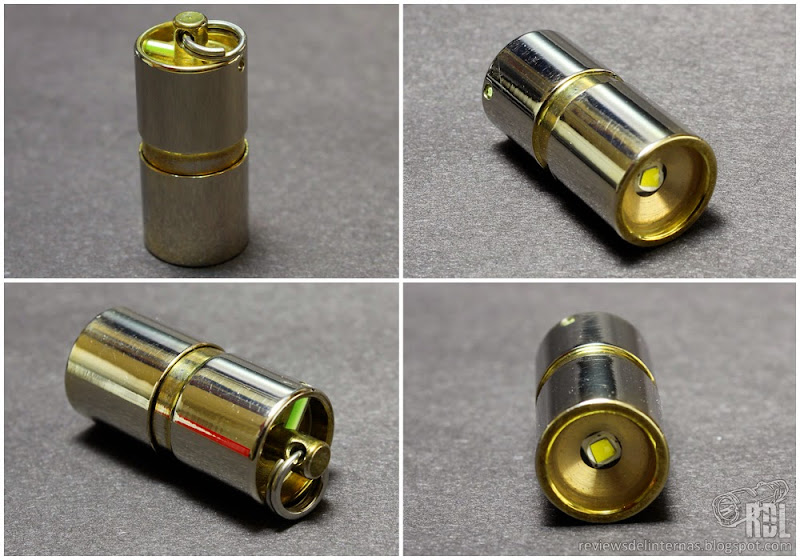
Note: Can you see how the color of this unit is a very light gold, derived from the previously mentioned problems with the nickel platting.
Inside we find the same driver system, protected with foam. The threads in this unit (which to be a unit pre-production I’m not sure if the final version will be the same) are somewhat different in diameter than those found in the SPY titanium, so we can use the FAIRY head in the SPY body but not the other way.
Tailcap design is also quite different, with a perforated central stud incorporating the split ring, so that its attachment point at the center and not on one side as on the SPY. Although not very stable, you can put it down to this point tailstanding.
Like SPY the FAIRY incorporates tritium vial installed in a similar way in the tailcap. In my case the vial is green.
In general, FAIRY has a much more discreet and elegant finish.
User interface, performance and beam profile are identical to those just seen from the DQG SPY, although it is possible that being machined brass, count with more than his titanium sister model dissipation and is capable of giving some more light on runtime curve during the first minutes.
PERSONAL CONCLUSION:
More than a flashlight, FAIRY DQG has the appearance of a small keychain jewel, with a very distinctive and individual golden touch. I especially like they kept the tritium vial in the tailcap.
Negatives: If the SPY is already difficult to operate one-handed due size, the FAIRY is even more by the lack of knurling on its head. The nickel plated in my unit (and presumably final polished brass FAIRY) is quite slippery.
Positives: Two designs to choose from for the same Flashlight concept with identical features and performance seems like a good idea as it gives the opportunity to choose the model that we like best. Besides, this new simple and minimalist design adds a new shape to the already extensive Kaychain DQG family.


